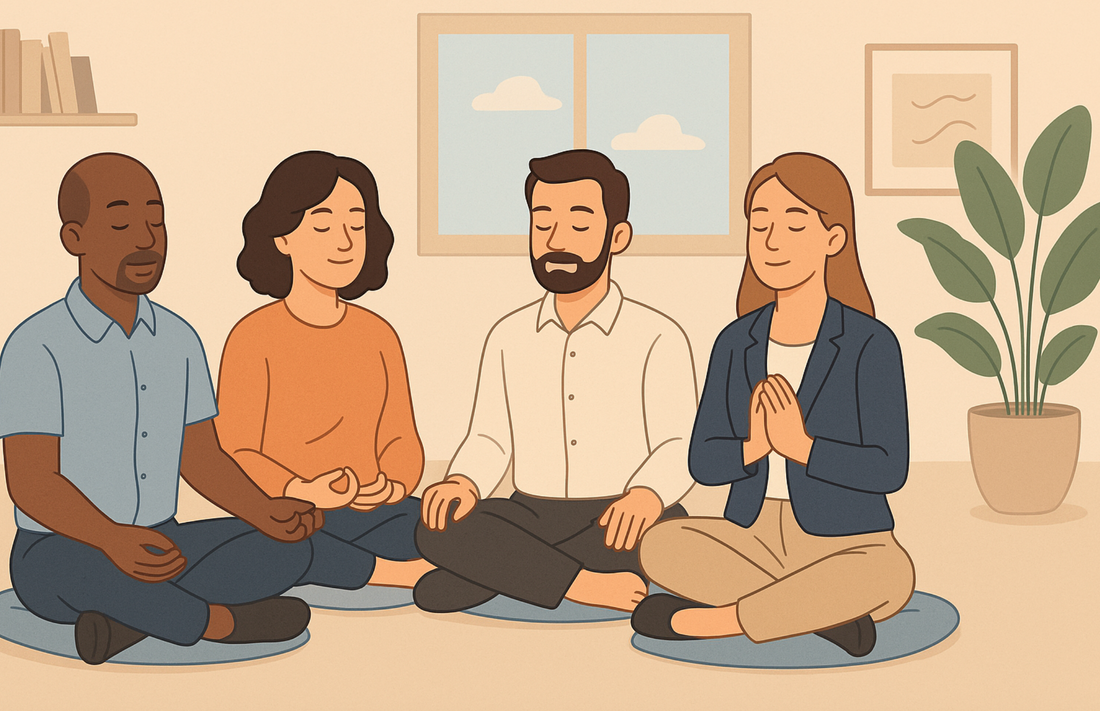
Team Building & Mental Health: How Team Activities Can Transform Workplace Well-Being
Share
Ever stopped to think that the secret to a high-performing team might be… a circle of chairs and a bunch of sticky notes
In today’s fast-paced corporate world, where burnout has become a silent epidemic and anxiety is lurking behind every Slack notification, leaders face a new challenge: caring for mental health without losing sight of performance.
The good news? You don’t have to choose one or the other. Team building isn’t just another feel-good activity, it’s a psychologically powerful strategy to create healthier, more empathetic, and more productive workplaces.
In this post, you’ll discover how building strong relationships can reduce stress, boost emotional engagement, and completely transform your team’s dynamic.
Why Team Building is Good for Your Mind
Organizational psychology has made it clear: work environments that promote emotional safety, belonging, and empathy help reduce stress, anxiety, and even burnout. So how do you create that kind of environment?
Through shared experiences. Real human connection. Intentional moments. That’s the core of effective team building, when it’s more than just an icebreaker.
5 Psychological Benefits of Team Building (With Fresh, Unexpected Examples)
1. Reduces Stress
Light, group-based activities offer a much-needed break from everyday tension.
Creative example: Try a “Silent Walk in pairs” a short walk outside in silence, where teammates only talk at the end about how they felt. Think of it as mindfulness on the move.
2. Boosts Self-Esteem
When people feel seen, valued, and heard, their confidence and sense of identity within the group increases.
Different example: “Hero Cape Exchange” everyone designs a superhero cape for a colleague, highlighting their unique strengths. The result? Instant self-esteem boost.
3. Strengthens Emotional Bonds
Genuine connections between colleagues reduce conflict and increase mutual support.
Creative example: “Letters from the Future” team members write letters to each other from five years in the future, expressing hope, appreciation, and encouragement.
4. Improves Team Atmosphere
A light-hearted and positive environment leads to better collaboration and morale.
Offbeat example: “Fails & Giggles” a circle where everyone shares a small, funny failure from the past. Vulnerability + laughter = trust.
5. Increases Emotional Engagement
When people feel emotionally connected to their team and the mission, they truly show up.
Transformational example: “Team Purpose Journey” an activity where the team co-creates a purpose manifesto using collage, drawings, and metaphors. Way more engaging than a PowerPoint slide.
Psychologically-Informed Team Building Ideas to Try Today
Looking to go beyond trust falls and pizza parties? Try these instead:
-
Listening Circles with Poetic Prompts
Ask open questions like “If you were a landscape today, what would you look like?” to spark deeper conversations. -
Secret Recognition Box
Team members write anonymous appreciation notes to one another. At the end of the day, everyone receives a bundle of kind words. -
Mindfulness with Unusual Objects
Try a short mindfulness session using a spoon, a pebble, or even a Rubik’s cube. The magic is in the attention, not the object. -
“Who Are You Without the Badge?”
A sharing circle where each person reveals a talent, hobby, or passion no one at work knows about. It’s fun, humanizing, and surprisingly bonding.Conclusion: Team Building Isn’t Just an Activity. It’s an Act of Care
When we look past deadlines and KPIs, we see what really matters: people.
And emotionally healthy people build stronger, more resilient, more innovative organizations. Team building, done right, isn’t just a feel good initiative, it’s a catalyst for emotional and cultural transformation.
Want to start small? Start with presence. With listening. With a good question in a circle.
And if you need help designing meaningful team experiences, we’re here for that. We create activities with purpose and soul.
